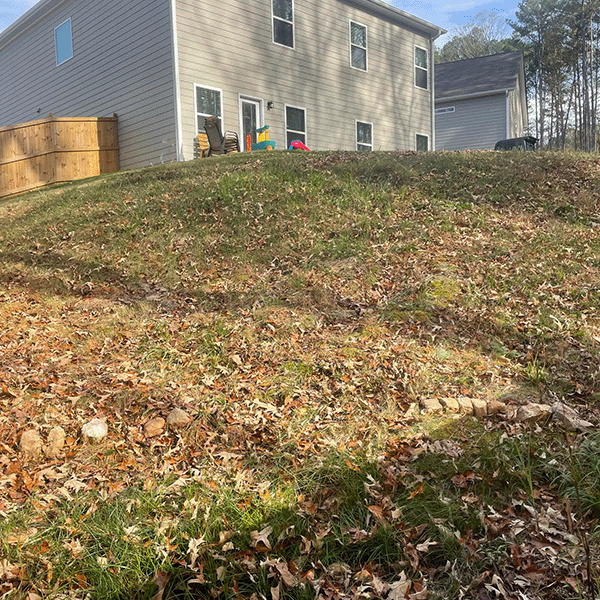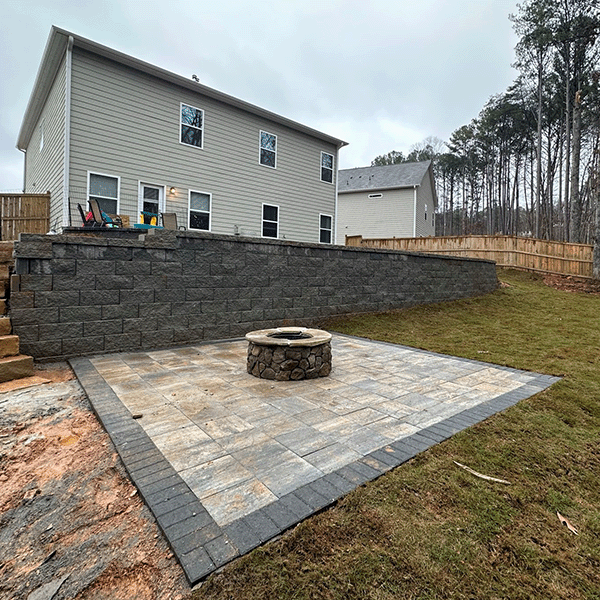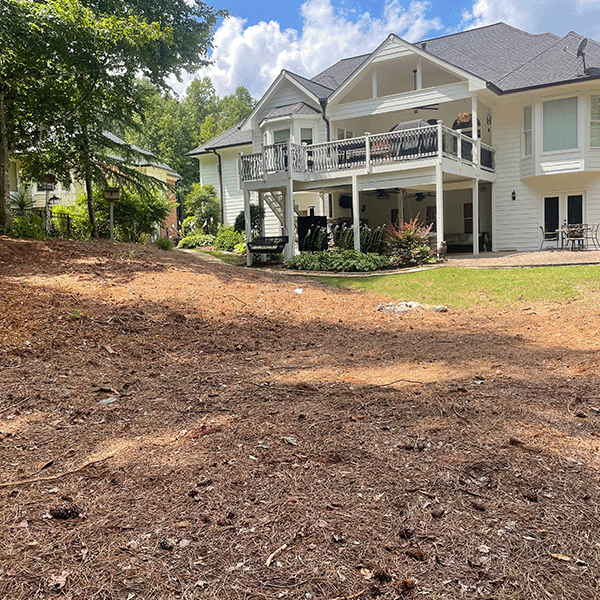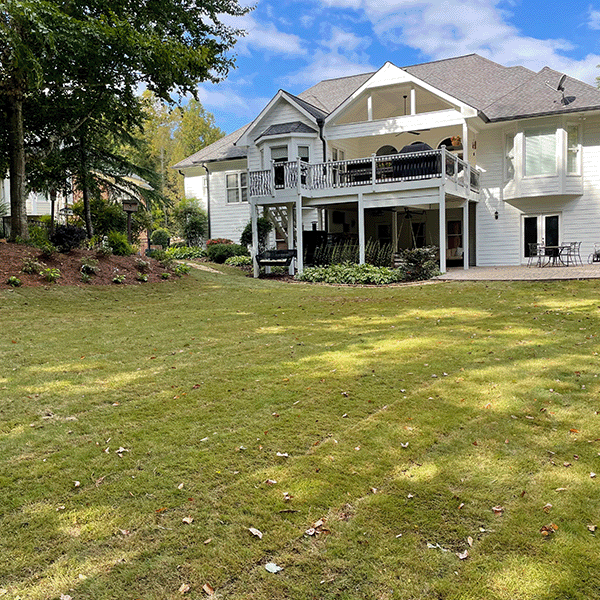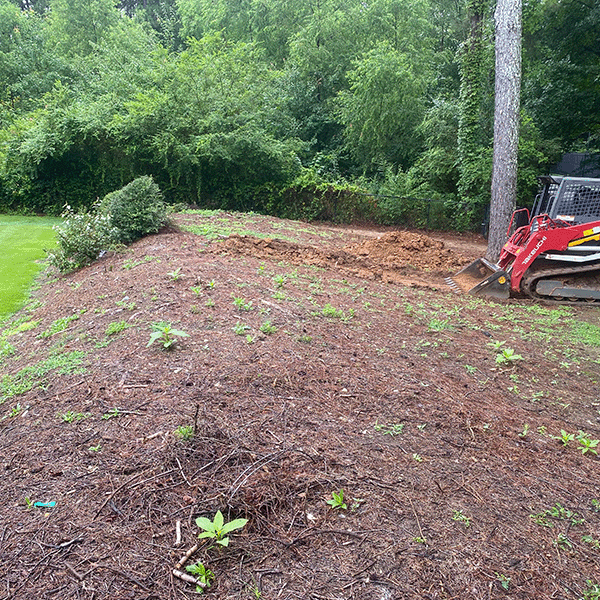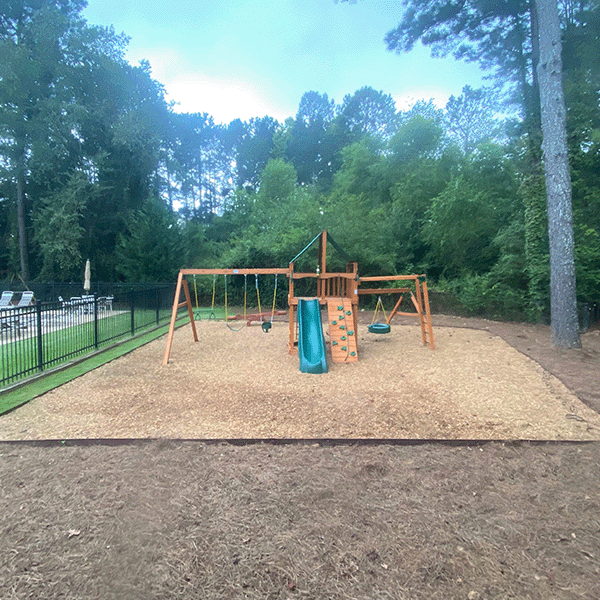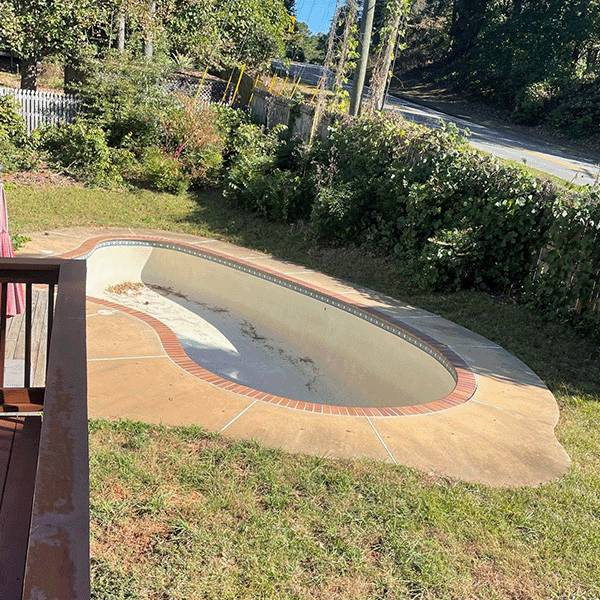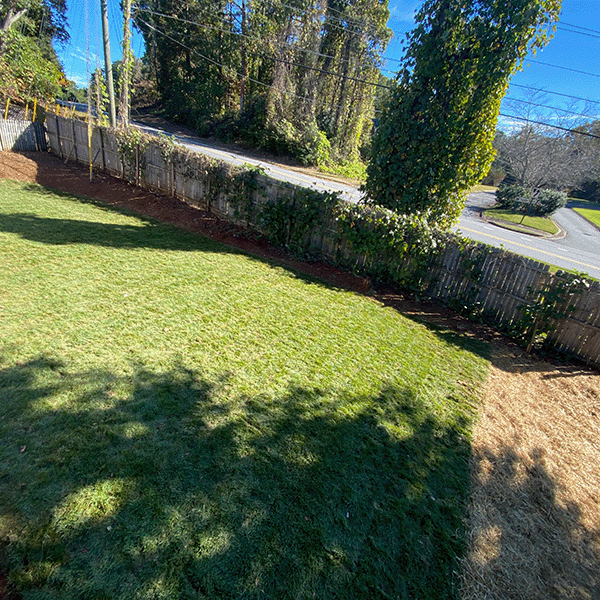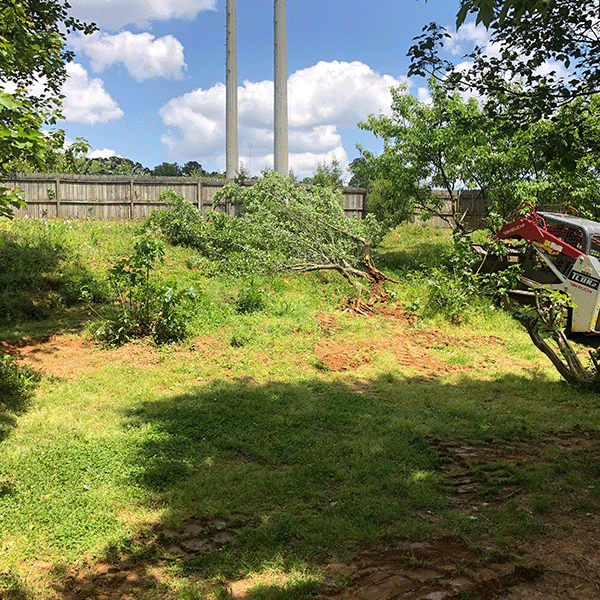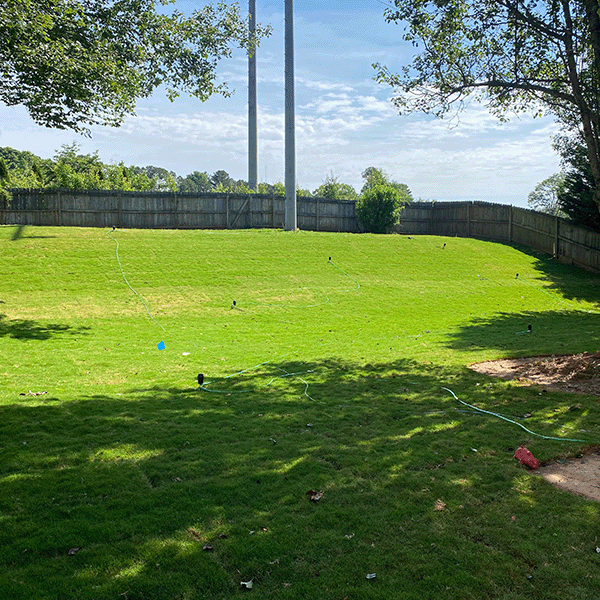Grading & Leveling
Land grading is a leveling of the surface. Dirt from higher up is moved into the lower lying areas to create a nice level surface to serve as the foundation for your project. Sometimes land grading may require you to move in additional dirt from somewhere else to complete the job.
Land may be graded flat or sloped. If you want to build a stone walkway for example, you’ll likely want a nice flat surface on which to lay the stone. But if you want to channel rain water away from your house, you’ll want to grade the land on a slope that runs down and away from your home.
Excavation
Land excavation is more than digging holes in the ground. It is the process of removing soil from a workplace to form a trench, cavity, or tunnel. Land excavation involves heavy machinery like bulldozers, excavators, backhoes, and forward loaders.
Though excavation is typically used in construction to grade and lay foundations, it can be multi-purposed as it can involve tunneling, creating wall shafts, and earthworks.
Excavation is essential for all projects as it creates a strong foundation for a construction project. Only experienced engineers and contractors can determine the excavation work necessary for a project.
Retaining Walls
A retaining wall is a structure that holds or retains soil behind it. There are many types of materials that can be used to create retaining walls like concrete blocks, poured concrete, treated timbers, rocks or boulders. Some are easy to use, others have a shorter life span, but all can retain soil.
Over the years many different retaining wall materials have helped to alter the landscape in which we live. Common retaining wall products include railroad ties or treated timbers as well as wall stones, natural stones, bricks and concrete block.
Sod Installation
If you’ve reached the point of no return when it comes to your lawn—you know, when the grass has retreated to the point where there is nothing but weeds as far at the eye can see—it’s time to start over. You’ve got two choices: Reseed or lay down sod. While reseeding might be cheaper and involve a little less effort, it also takes longer to get that gorgeous green lawn you’re longing for.
Laying sod, on the other hand, is a path to near-instant gratification. Instead of waiting 6 weeks for seed to grow, you get a finished-looking lawn right after you complete the job. The key here is the word “looking”—it’s not really finished until the grassroots are established and have bonded with the underlying soil, which can take anywhere from 2 to 6 weeks.
Playground Prep
Do you ever look into your backyard and think… “that would be a perfect place for a playground, if it wasn’t for that hill?” If so, then you’ve come to the right place. A playground requires a level surface free from rocks and stumps so that your little ones are protected from injury. This is where we come in. Our team specializes in preparing the ground and surrounding areas for a playground. We make it smooth, remove all the hazards, clean up, and leave you with a great place to put together that brand new playground.
Pool Demolition
You have decided that you no longer want your pool, so now you would like to have it demolished and filled in. However, you are not exactly familiar about the process.
People usually think you just dump dirt in a pool and nothing else. But they need to remember that it’s an in-ground construction, and if it’s not done correctly, the ground can cave in or the shell can float in the future.
Proper pool demolition can be done in two basic ways. One is by partially deconstructing the pool and covering it with rubble and dirt, and the other is by totally removing the pool structure before covering the pool cavity with dirt.
Stump Removal
When you are dealing with a leftover tree stump in your yard, what can you do about it?
Stump removal is the process of completely removing the stump from your yard. Depending on the size and type of stump, this can be done by hand or with the help of stump removal equipment. Once the stump is removed, you will be left with a hole in your yard that will need to be filled. Options for filling are typically either with dirt or planting a new tree.
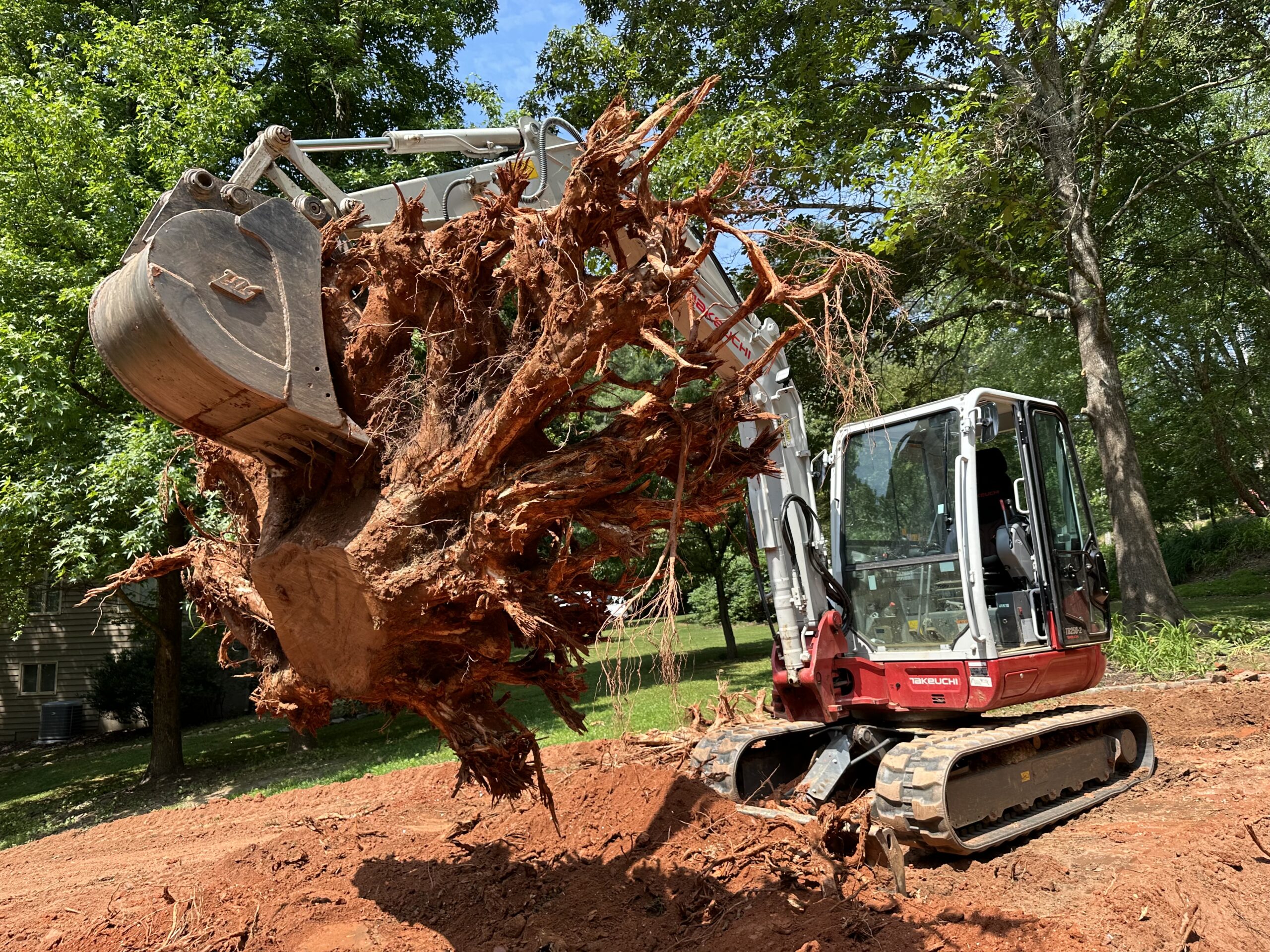
Gravel Driveways
A gravel driveway can be very attractive in a characteristically unpretentious way, introducing casual curb appeal to the first and last element of your home that a visitor sees. Throughout the United States, gravel remains a perennially popular driveway material, not only for its aesthetics, but also for its relatively low cost in comparison with the alternatives. Furthermore, whereas poured concrete or patterned brick typically require professional installation.
Drainage Solutions
Properly corralling and dispersing water runoff is important because we need it to water our vegetation without drowning it. Additionally, collected water is used to replenish a town’s freshwater supply. The longer water sits on a surface, the more susceptible it is to contamination. The types of drainage systems will allow you a better comprehension of their roles and how they work together.
Structural Demo
Structural demolition is part of the comprehensive procedure of tearing down buildings or specific structural components, including building walls, floor systems, roof systems, foundations, and footings.
Sinkhole Repair
Sinkholes are caused by solutioning of the bedrock that eventually produces a hole in the rock. Water and soil seep through the hole and form an underground domed void. In time, the dome grows to point where it cannot support its weight and it collapses. When it collapses, a depression appears and the sinkhole becomes apparent on the surface. If the surface depression affects a building or road, it is a very serious matter that requires either sinkhole repair or sinkhole remediation.
Shallow, isolated sinkholes are often repaired by excavating to rock and building a “plug”. But when a sinkhole is too deep or too close to a structure, O&B grading’s remediation process is ideal.
Land Clearing
Land clearing means the uprooting or clearing of vegetation in connection with construction for buildings; right-of-way maintenance; agricultural, residential, commercial, institutional, or industrial development; mining activities; or the initial clearing of vegetation to enhance property value; but does not include routine maintenance or property clean-up activities.
Bush Hogging
You may have heard bush hogging called brush hogging, rotary cutting or rough cut mower; it all refers to the same thing. The term “bush hogging” originated with the company that invented the first rotary cutter, the Bush Hog®. We use the brand name to describe this type of mowing much in the way we might call performing an Internet search “Googling.”
Rotary cutters are heavy-duty mowing decks that you tow behind tractors. It’s not a clean-finish process you would use to cut a golf course or football field. It’s most effective to clear overgrown land that’s reasonably level and not strewn with large rocks or tree stumps.
Bush hogging will chew up and spit out high weeds, brush, and saplings up to 1 inch in diameter. Like a mower, it will fling debris in all directions at high speeds, so it is important to make sure people and animals are well out of projectile range and you’re not bush hogging a field next to a full parking lot or a Sunday church service.

